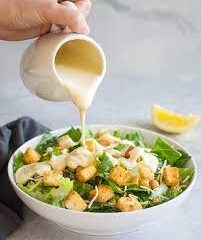Dealing With a Feed Rep

In my last article I touched on potentially false statements offered by commercial feed reps to persuade you to use their feed. In this article I’d like to take it to the next level by offering some ideas for you to use in challenging those reps.
You should all know how to identify “tag dressing” by now since I’ve covered it in previous articles and discussions. We’ve also discussed the differences in ingredients showing that all ingredients are not created equally.
I have been hearing from my local commercial clients that with the end of Covid restrictions and the current increases in feed prices there have been a few feed reps coming out of the woodwork trying to find new business.
The best way to sort through the noise is to hire an independent feed specialist but I think I’m about the only one around! Nutritionists and some vets know quite a bit about nutrition but most have no idea about the feed industry and rely on feed tags and literature to help formulate their feed decisions.
If you have someone like me watching out for your interests you’re more likely to have a better outcome.
Before I go any further not all feed reps are money grubbing snake oil salesmen. I have had the pleasure of working with some excellent highly knowledgeable feed reps. At the end of the day all of them have a financial incentive to promote their own line. This isn’t necessarily a bad thing if their line offers results.
Two of the best I’ve worked with will actually walk away from an opportunity when they honestly believe that they can’t do better than the current feed. I respect that.
On the other hand I know feed reps who will make recommendations based on maximizing their comp plan at the expense of both owners and horses. Needless to say I didn’t work with those folks.
Since I’m a good guy I’m going to share with you some questions to ask and arm you with some information to refer to.
Let’s start with the infamous…
“My feed is the same as (or better than) their feed but it costs less”.
OK, I don’t know about you but I notice a distinct difference in “generic” alternatives to products. I’m OK with some generics because performance isn’t super critical. I’ll save $4 a jar on diaper cream for my horses where I’m not sure I would for my baby.
The first question I would ask is “What makes your feed the same as theirs and how can you do it for less?”
The first thing this rep will do is compare feed tags. Protein..same. Fat…same. Fiber…same. There ya go!
Oh wait! Lysine on the premium feed is 0.9% and on the “same as” feed it’s only 0.6%. Not a big number but a critical (and expensive) ingredient that will make a noticeable difference in performance.
Lysine is a very obvious example but there are hundreds of other ingredients that have the same name but come from a different source. I’ve done a full article on horse feed ingredients that offers more information on the subject.
You should have no doubts that the major feed companies get first choice on ingredients and they use their buying power to secure the best sources at least a year in advance.
The major brands test every load of ingredients before they are accepted. I’ve witnessed this personally. A load of beet pulp pulls up to the sampling station and a boom probe comes out and pulls samples from different sections of the load. The delivery truck then pulls into a waiting area while the mill’s on-site lab runs their tests for quality, nutrient content and toxins.
If the load of product doesn’t meet the requirements the truck is sent down the road. The ingredient supplier isn’t going to dump 40,000 pounds of beet pulp into the river. The sales guy is going to be on the phone looking for a home for their product. Chances are the company that the rep in front of you represents bought it.
“Is your mill horse feed only?”
This is an important consideration. Many ingredients used in other livestock feed are highly toxic to horses. Premium feeds from national companies are produced in horse only facilities so cross contamination is impossible.
Most smaller feed companies can’t afford that luxury and so your horse’s feed is coming from the same line that produces feed for dairy cows and sheep.
“Who designed the feed? Who is your nutritionist and what are their credentials?”
Good luck getting an answer for this question.
The major feed companies employ well credentialed equine nutritionists to design and test their feeds.
“Where do you do your feed trials and where can I find the results?”
See above.
Make the Rep Prove It
A couple of years ago I ran into a rep for a small regional mill trying to break into the horse market around here. Apparently she’s back at it once again.
Her most outrageous claim was that her feed was better than the others because it contains “the only probiotic proven to burn through stomach acid and make it to the hindgut.”
I asked her to provide me with the data that showed these results. Two minutes later she posted the literature that said “the only probiotic proven to burn through stomach acid to make it to the hindgut.”
I explained that the statement was a marketing claim and wasn’t proof. She replied that I was mean and beating her up because she was a woman before blocking me.
I actually pursued this claim and found a blurb by the Irish company selling the yeast used in this particular probiotic. The “research” consisted of an in vitro “study” where this particular bacteria reproduced in a petri dish of diluted stomach fluid.
You have every right to ask a rep for the proof they have that their feed does what it claims.
What are You Really Paying For?
“We’re cheaper because you are paying for their fancy bags and all the advertising” is something I’ve heard hundreds of times from feed reps.
The reality is that based on economies of scale, a major feed company buys so many “fancy” bags that the unit cost for their fancy bag is probably about the same as the monochrome paper bag of the cheaper feed.
Likewise the cost and availability of quality ingredients. A commodity company is going to jump when a buyer of millions of tons of their agricultural commodities calls. Not so much with a regional mill.
What you are really paying a premium for is in house professional nutritionists who design and test your feed, superior ingredients, advanced biosecurity, quality control and reliable distribution.
Ask for a Test Sample
Ask the rep to provide a pound of their feed along with a feed tag for the product. You want to pull it out of a bag yourself.
Let the rep know that you are going to send it to Equianalytical for independent testing. Also let them know that if the feed fails to meet the GA on the tag you are going to send the results to your state’s department of agriculture.
I have done this about a dozen times when I was competing with a local mill. Only once did the feed even come close to what the mill claimed on its feed tag.
Meeting the GA values doesn’t guarantee a quality feed. I have a jar of pellets from Purina that is 14% protein, 6% fat and 18% fiber that is made from motor oil, chicken feathers and carpet fiber.
Ask for a Feed Trial
“OK, if the feed is as good as you say then I’d like to try it. Let’s pick three of my horses and you feed them for 6 weeks then we’ll see how they do.”
Why would a feed rep not jump on this opportunity? I loved doing feed trials.
Think about it. This rep comes up your driveway and starts telling you how amazing their feed is. Why shouldn’t you ask them to demonstrate the performance?
After all, it’s not easy converting an entire barn to a new feed. Each horse must be transitioned and adjustments made. Converting feeds can be a weeks-long process. If the new feed fails to perform you find yourself having to switch again.
The bottom line is that it is difficult if not impossible for a less expensive feed from a small mill to outperform a premium feed from a major feed producer. The resources are all on the side of the big mills.
In less than 18 months in my local market I had converted more than 1,500 horses to my feed lines. What’s even more significant was that I did it with premium feeds that had a bag cost of at least 20% more than the feed the owners were currently feeding.
I never lost a feed trial because I selected the right feed for the right horse and the owners saw an improvement in performance as well as an overall decrease in feed costs.
The bottom line is that it is unlikely that you will get the same results from a lower cost feed and it’s easy to match or even exceed the values expressed on a feed tag with an inferior product.
Whether you’re feeding two backyard ponies or a barn full of show horses you should always be looking for the best balance of cost and performance in your feed. Every feed rep you run into offers the best feed at the best price, just ask them to prove it and see where the conversation goes.
If you’re shy about it just call me and I’ll break their stones FOR you.


